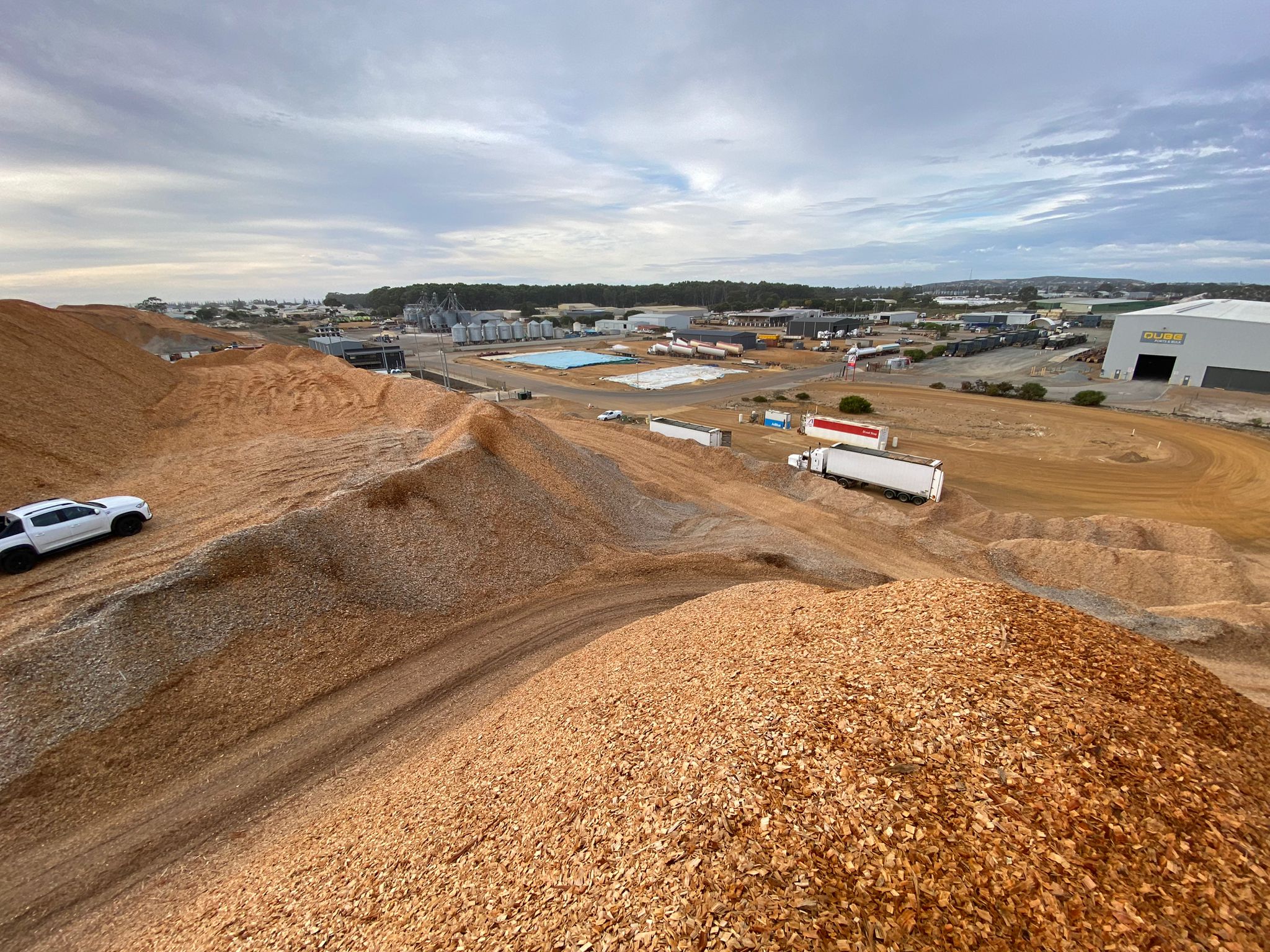The company Renewable.bio aims to produce biofuels and plastics from waste wood chips. Photo: Renewable.bio
The owner of one of the wood chip piles at the corner of South Coast Highway and McLean Street was quick to reassure Esperance people about the fumes they saw coming from the mound on Tuesday.
Workers were seen on top of the heap dowsing it with water.
“It’s not a fire,” Renewable.bio chief executive Angelo Dabala said.
“It’s essentially anaerobic decomposition, it starts deep down inside and generates a lot of heat.”
Mr Dabala said the decomposition was not normal and would not cause a fire as there was no oxygen available deep down in the pile.
“Our people have got thermal cameras, they check it every couple of hours,” he said.

“It will be moved in a couple of days.”
Mr Dabala said they were able to start the venture using fire-damaged trees that were unsuitable for paper production.
“The farmers around Esperance are so fed up with trees they are bulldozing them, which is not good socially or environmentally, so we are trying to help,” he said.
“It’s essentially woodchips for power — they are going to be sent to Europe and they burn them in converted coal-fired power stations.
“We are exporting the woodchips at the moment but that is not our game plan.”
Mr Dabala said his company intended to build a plant at Shark Lake to convert the biomass into something they could convert to bio fuels.
“We have started operations to get some experience under our belt then change over from exporting to value adding,” he said.
“The whole bio energy world is moving really quickly — there’s projects to convert biomass to renewable diesel, to aviation fuel, to synthetic plastics and polymers.”
Mr Dabala said they hoped one day to make bioplastics in Esperance.
“We already inject half a million dollars into the Esperance community every month,” he said.
“When we get our plant up and running it will be 10 times that. That’s the plan.”
The tuart trees growing around Esperance are not native to this area, but were one of several tree species recommended for local farm planting by the WA Agriculture Department in the late 1950s.



